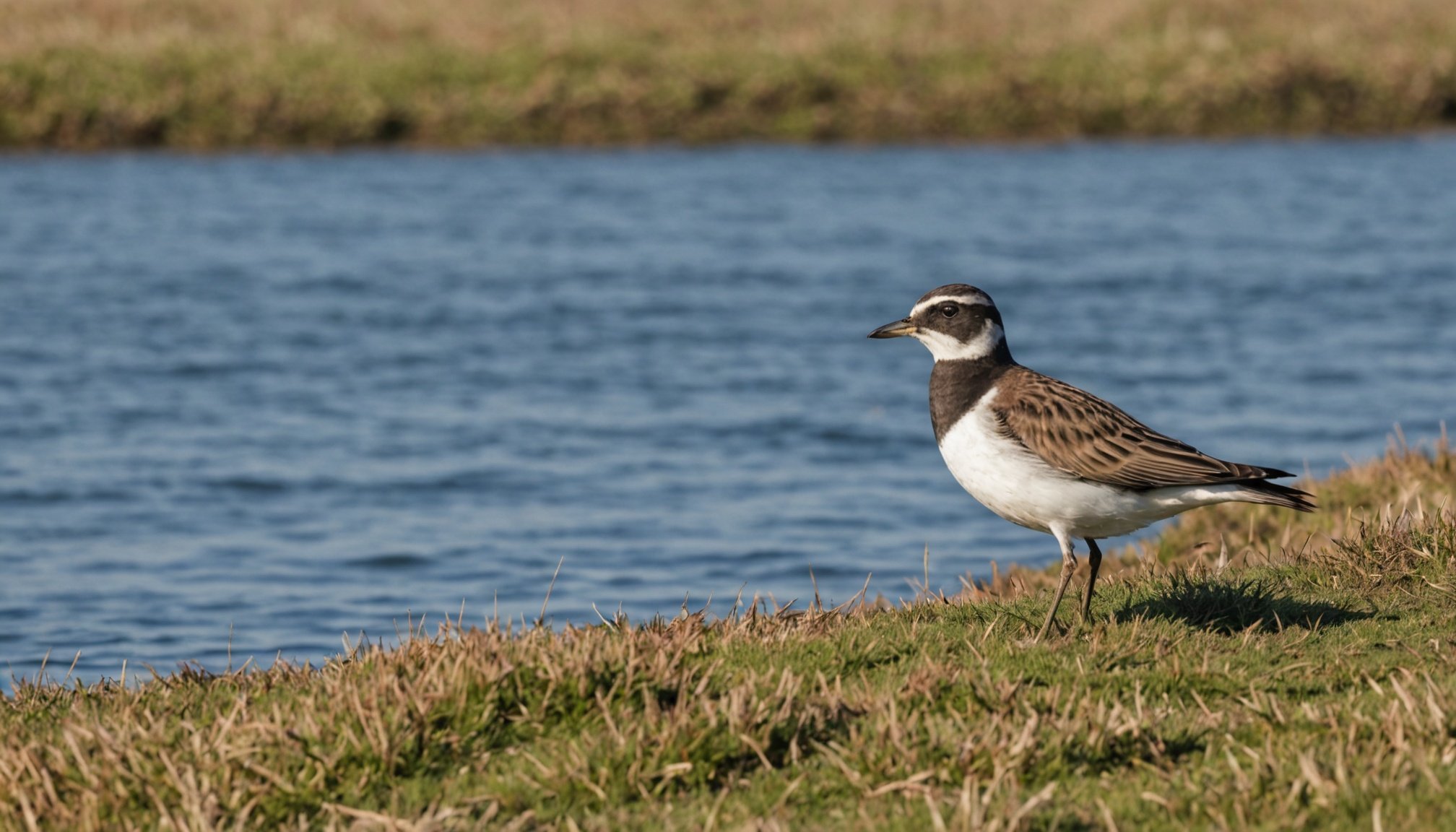Overview of Climate Change Impact on Coastal Ecosystems
The ecological impact of climate change on coastal ecosystems is profound, affecting biodiversity and ecosystem stability. Coastal ecosystems—crucial habitats for numerous species—are increasingly threatened by climate change. Rising sea levels and warmer ocean temperatures disrupt the delicate balance of these environments. Symptoms include habitat loss, changes in species distribution, and increased frequency of extreme weather events.
Coastal ecosystems are essential for maintaining biodiversity; they provide breeding grounds for fish, support migrating birds, and protect shorelines from erosion. As these ecosystems face climate change, the loss of biodiversity could have cascading effects, disrupting food webs and reducing ecosystem services.
Have you seen this : Reviving the corncrake: a deep dive into uk zoo breeding programs for endangered species conservation
Historically, the UK coastal environment has undergone significant changes. Over the past century, human activities combined with climatic shifts have altered coastal landscapes extensively. The UK has observed intensified storm surges and erosion, reshaping coastal environments and threatening the species residing there.
Addressing these challenges requires a comprehensive understanding of climate change’s indicators and ecological impact. This knowledge is pivotal for developing strategies to conserve biodiversity and maintain the functions of these vital ecosystems. Understanding historical changes offers insights into future impacts, underscoring the importance of mitigating climate change’s effects on coastal areas.
Topic to read : Top fish varieties for uk ponds: boost your local ecosystem with these ideal selections
Effects on Coastal Bird Populations
Coastal bird populations have witnessed a significant decline over recent years, a trend impacting various species. Notably, species such as the piping plover and the black skimmer have been severely affected. These birds rely on coastal habitats for nesting and feeding, making them vulnerable to habitat disturbances.
Recent statistics reveal concern as some coastal bird populations have diminished by as much as 30% in the past decade, according to conservation reports. This decline is alarming, particularly for species already listed as endangered or threatened. Monitoring efforts are crucial to understand the severity and specifics of the decline among these coastal dwellers.
Multiple factors contribute to the vulnerability of coastal birds. Habitat loss due to human encroachment and climate change poses a significant threat. Rising sea levels and increased storms lead to the erosion of nesting sites. Additionally, pollution, including plastic waste and oil spills, disrupts food sources and habitats, compounding the issue for these delicate ecosystems. The fragility of coastal birds is thereby linked to both natural and anthropogenic reasons, necessitating urgent conservation strategies to safeguard their futures.
Habitat Changes and Their Consequences
Changes in natural environments affect the delicate balance of ecosystems, causing profound impacts on both wildlife and human populations.
Alterations in Nesting Grounds
Habitat loss due to various factors like urban expansion and deforestation has severely impacted nesting grounds. Many species, particularly those dependent on specific environments for reproduction and survival, are facing challenges in finding suitable locations. Sea-level rise further exacerbates this issue, flooding crucial nesting and breeding areas. This reduction in available habitats results in decreased reproductive success and survival rates, threatening biodiversity.
Changes in Food Availability
Habitat degradation influences the availability of food, affecting the entire food web. As habitats are lost or altered, the abundance and distribution of prey species can change dramatically, leading to scarcity for predator species. For instance, aquatic animals may find their prey harder to locate due to pollution or changes in water conditions, altering their feeding patterns and impacting their health and populations.
Impact of Habitat Fragmentation
The fragmentation of habitats not only isolates populations but also disrupts migration and breeding. Fragmented landscapes are less conducive to successful breeding as they limit access to vital resources. This can decrease genetic diversity and the resilience of species, heightening their vulnerability to environmental changes and catastrophes. Ultimately, understanding these impacts is crucial for developing effective conservation strategies.
Breeding Patterns and Success Rates
Breeding patterns have evolved significantly in the face of environmental changes. Factors like temperature increases and seasonal shifts impact the timing of breeding, with various species advancing or delaying their reproductive cycles. Such shifts in breeding timing often correlate with the availability of resources or the presence of specific climate variables, which are critical to reproductive success.
Environmental changes can either enhance or diminish reproductive outcomes. For instance, warmer temperatures might initially boost breeding success by extending the feeding season, but can later cause mismatched timing between hatching and food availability, disturbing growth and survival rates.
Case studies provide compelling insights into these complexities. Take, for example, the alterations in breeding patterns of certain bird species—some now lay eggs earlier in response to earlier springs. The correlation between these shifts and climate variables like temperature and precipitation demonstrates both adaptability and vulnerability among these species.
An in-depth examination reveals that challenges such as habitat destruction and altered food chains intensify the pressure on many species. Understanding these breeding challenges helps to develop effective conservation strategies. Ultimately, examining these breeding patterns and environmental correlations is pivotal in fostering long-term reproductive success.
Migration Changes and Patterns
Migration is a well-studied phenomenon, where species relocate to take advantage of seasonal resources. Migration patterns have been noticeably affected by various environmental changes, particularly altering wintering grounds and influencing habitat shifts.
Migratory routes and timing
Species have traditionally followed specific migratory routes, finely tuned over generations. However, with the shifting habitat patterns, these routes, as well as the timing of migration, have seen significant changes. As habitats transform, some species are adapting by altering their routes or timing their migrations differently. Altered paths are an adaptive response to new environmental markers.
Consequences of altered habitats on migration
Changes in habitats have profound impacts on migration, with some species struggling to adapt to new habitat shifts. This can lead to challenges such as increased predation or lack of resources along well-established migratory paths. The suitability of these new habitats in supporting life during migration becomes a critical determinant of survival for various species.
Impact of climate on wintering grounds
Climate change has a direct impact on wintering grounds. Warmer temperatures may offer extended resources but can also mean more competition or new predators. These shifts necessitate a careful analysis of wintering ground conditions to assess their continued viability. Exploring these changes uncovers the complex interplay between climate factors and migratory behavior, highlighting adaptability needs and survival strategies.
Conservation Implications and Strategies
Human activities and climate change are increasing threats to biodiversity, making conservation strategies crucial for protecting vulnerable species. Although current policies aim to address these issues, the effectiveness of these strategies varies widely. Existing policies often lack enforcement and fail to address rapidly changing environmental conditions. For example, habitat protection policies must evolve to account for shifts in species distributions due to climate change.
Policymakers can enhance these strategies by encouraging community involvement, which fosters local stewardship and awareness. Involving local populations allows conservation efforts to be tailored to specific ecological and cultural contexts, increasing their success rates. Strategies like community-based forest management have shown promise in many regions.
To improve conservation outcomes, an integrated approach is recommended. This includes updating policy implications to consider the latest climate impact studies and employing adaptive management techniques. Adaptive management allows for real-time adjustments based on monitoring data, providing a flexible framework to accommodate the unpredictable nature of climate effects on ecosystems.
In summary, while numerous policies aim to mitigate environmental threats, a collaborative approach, integrating scientific research and community participation, is essential to effectively conserve biodiversity. By adopting robust habitat protection measures and engaging local communities, we can create resilient ecosystems capable of withstanding future challenges.
Expert Opinions and Case Studies
Exploring the intersection of expertise and fieldwork, the insights from ornithologists offer invaluable perspectives on bird conservation.
Interviews with Ornithologists
Through detailed discussions with seasoned ornithologists, new understandings have emerged regarding bird behaviour and conservation strategies. For instance, Dr. Emily Carter emphasizes the importance of habitat preservation as a key priority, indicating that without suitable environments, many species face increased risk of extinction. These expert opinions underscore the urgency of implementing effective preservation measures.
Research Findings from Prominent Studies
Prominent studies, such as those conducted by the Royal Society for the Protection of Birds, have unveiled crucial data on avian population dynamics. Findings indicate a drastic decline in certain species due to habitat loss and climate change. This research provides a foundation for targeted actions, offering specific strategies for habitat restoration tailored to the needs of affected bird communities.
Community and NGO Involvement in Bird Conservation
Community initiatives play an essential role in bird conservation, bringing grassroots support to the forefront of environmental efforts. Organizations like the BirdLife International partner with local groups to foster sustainable practices. NGOs collaborate to create programs that encourage local involvement, educate residents on ecological impact, and provide resources to maintain and restore natural habitats. These initiatives are pivotal in ensuring long-term conservation success.
Visuals and Data Representation
Visual data plays a critical role in effectively communicating complex information. Infographics, for instance, are exemplary tools for illustrating population trends, allowing readers to comprehend shifts at a glance. These graphical representations simplify intricate datasets, highlighting key aspects without overwhelming the viewer with multitudinous figures.
When depicting habitat changes over time, infographics and charts offer visual narratives. For example, a series of time-lapse charts can show how a particular habitat has evolved, indicating periods of significant change. This method of storytelling through data helps bridge the gap between raw numbers and informed conclusions, engaging readers visually and emotionally.
The importance of visual data extends further in research findings, where clarity and precision are paramount. Infographics not only enhance understanding but also ensure that findings are accessible to a wider audience. By distilling complex data into visual elements, researchers offer a more inclusive approach to data analysis. This method encourages curiosity and deeper investigation, transforming readers into active participants in the learning process.
Overall, visuals like infographics and charts not only enhance the presentation of data but also empower audiences to make informed decisions based on clear, easily interpretable information.











